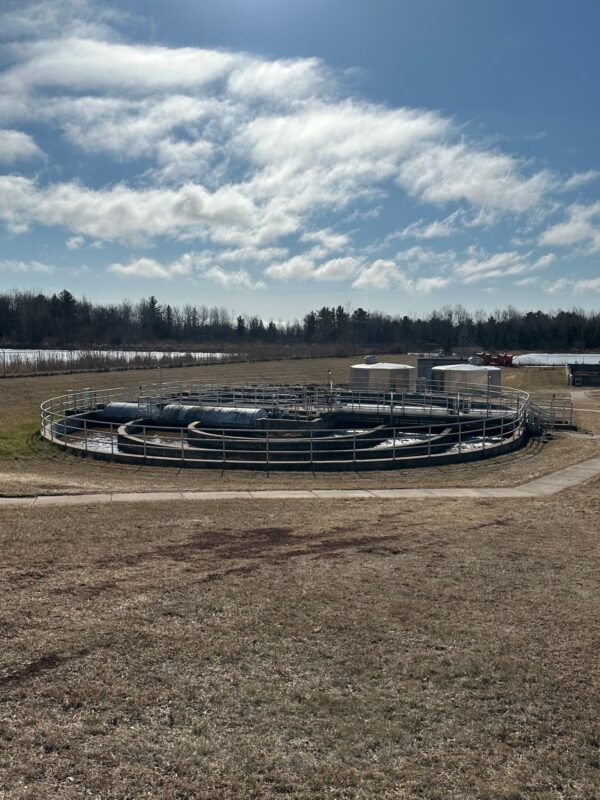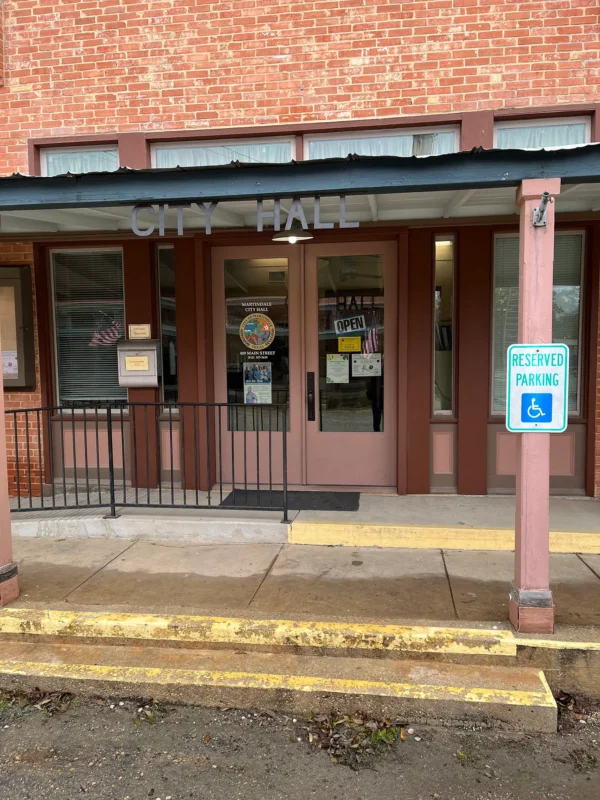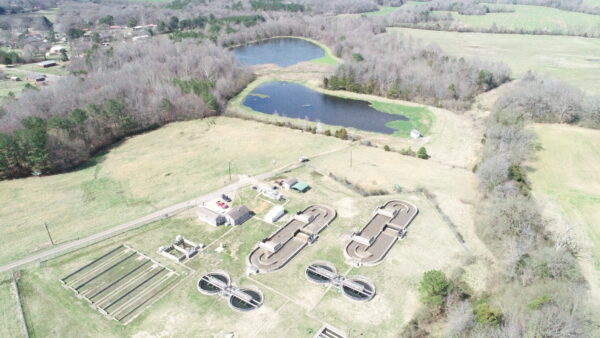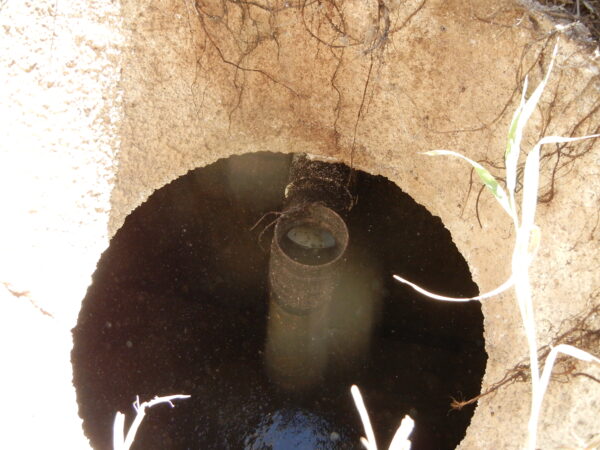Ohio Site Visit Shows Wastewater Potential of Sand Bioreactors
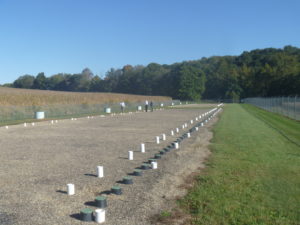 On October 3, Knox County (Ohio) Water and Sewer generously hosted a site visit to the Bladensburg Sand Bioreactor Wastewater Treatment Plant. We had great weather and a great discussion both on-site and afterwards at the Bladensburg Community Center, where Dr. Karen Mancl from Ohio State University presented slides that highlighted the differences between the single-pass and multi-pass designs of sand bioreactors. Some highlights from both discussions are below:
On October 3, Knox County (Ohio) Water and Sewer generously hosted a site visit to the Bladensburg Sand Bioreactor Wastewater Treatment Plant. We had great weather and a great discussion both on-site and afterwards at the Bladensburg Community Center, where Dr. Karen Mancl from Ohio State University presented slides that highlighted the differences between the single-pass and multi-pass designs of sand bioreactors. Some highlights from both discussions are below:
Bladensburg
All the nearly 90 connections are served by septic tanks (individual, shared, and some cluster) and a small diameter sewer collection system. Half of the community’s flow is collected at a pump station due to elevation, then pumped up to the recirculation tank at the site of the sand bioreactor. The other half of the community’s flow is via gravity straight to the recirculation tank at the front of the sand bioreactor.
Recirculation
Recirculation allows the reactor to fit on a smaller footprint. It effectively increases the depth of the reactor by passing the influent through the same depth of media several times. On average, the raw influent makes up about 1/5 of the flow in the reactor, where the rest of the flow is already in some part of recirculation.
High flow – Rain Events
When there are heavy rains as is not uncommon in this ‘rain belt’ part of Knox County, the flow (raw influent and recirculation) that passes through the media is discharged more frequently, which means that some of that flow is not completing the average 5 trips through the media that is seen during normal/dry flow conditions. This is accomplished by a sort of float valve that diverts flow to the outfall when the discharge chamber fills to a certain volume. During normal flow conditions, flow continues to recirculate until that float valve raises to the necessary height in the tank to then divert flow to discharge. Jeff and Greg from the Bladensburg plant have not seen effluent quality suffer during these heavy rain events. However, if heavy rains were to continue for a long period, such as a month, as discussed later in regards to the control panel, then treatment performance will suffer. Also, they both noted that they do not see notable I&I in their collection system (i.e. the pump run time at the pump station and recirculation tank do not vary much from dry weather flows during heavy rains). Additional flow during rain events is believed to essentially only be rainfall caught by the sand bioreactor field itself. Professor Mancl noted that sand bioreactors are great options in areas with highwater tables or problematic soils since the bioreactor is lined with a membrane and is not affected by groundwater.
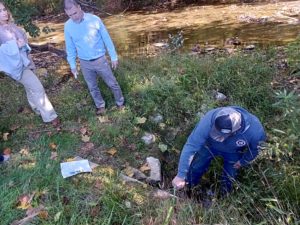 Headworks
Headworks
A big question from some operators and engineers leading up to this site visit had been what the headworks for a municipal sand bioreactor consists of. When discussed at Bladensburg, staff explained that there is no screen for grit removal like mechanical plants. Essentially, the septic tanks prior to the small diameter collection and the baffles at the pump station and recirculating tank serve to capture grit and protect their pumps. This design has been effective for their system’s 10 years of operation. However, they did emphasize that in hindsight they would have preferred to have all flow go to the pump station and to have a shallower recirculation tank. Staff explained that the tank is around 20 feet deep due to elevation needs to receive the gravity flow, which creates difficulties in servicing the tank and safety concerns. Even though sending the flow from the other half of town would mean roughly doubling the energy used for pumping, staff believe it would be well worth it to facilitate O&M.
Related to this point, Professor Mancl explained that smaller sand bioreactors could have been located at the site of the pump station and elsewhere, so that sewage doesn’t need to be pumped, just the treated effluent, which is just as easy to pump as drinking water and to have the treated effluent flow to single outfall (as was done with a fixed media treatment system in Amesville, Ohio, though they used textile media rather than sand).
Outfall
The outfall is down the short hill from the bioreactor and is fed from a pipe that transmits flow diverted by the float type valve next to the recirculation tank. The outfall pipe also has a flap that flow pushes open, but is heavy enough to prevent muskrats from entering the pipe. We all noted the low flow of the creek and commented on how high quality the effluent must be to not impact the stream (Wakatomika Creek) water quality. Jeff agreed and provided a copy of the publicly available MORs.
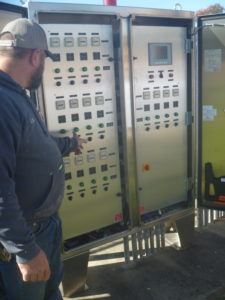 Control Panel
Control Panel
The main difficulty that Bladensburg has had with its system is the Siemens control panel. It has not been reliable for them and at one point they had to manually control dosing for about a month. During that month of operation, they would rotate where dosing was occurring on the sand bioreactor approximately two times per day, rather than the control panel having each pump rotate through its 4 different spray application lines. This meant that the sand bioreactor did not receive the intervals of oxygen reaching the microorganisms between doses and effluent quality was observed to be poorer during this month. During normal operations, the pumps and manifolds do the odd numbered application lines one time (2 minutes of application followed by 9 minutes of rest), and then it doses the even lines on the next cycle, repeating this cycle over 24 hours. This allows time for air to diffuse throughout the bioreactor.
Best practices and Cost Considerations
One of the cons of a sand bioreactor is that they do require periodic weeding, which as all gardeners know, is a tedious task. While the operator has difficulty meeting time requirements at the plant because there is not much to do, outside of sample collections, the O&M of weeding was an obstacle to the County choosing to install another one of these systems. Professor Mancl shared suggestions based on her research and the success of the Harrison, Ohio, in using a large plastic covering to kill the weeds and weed seeds that you move from section to section of the bioreactor every few weeks. The more recent solution that Harrison uses is to allow goats to weed the bioreactor.
Another best practice that Professor Mancl shared was during the flushing of the application lines that apply the waste to the sand to install quarter turn valves on the ends of the application lines and to cut a pvc tool and hook you can use from a standing position to open the caps and turn the valves. This avoids having to get on your hands and knees to open the caps and turn the valves by hand.
Professor Mancl also noted that the < 2.0 uniformity coefficient of the sand that was used in the installation added a lot of unnecessary cost to the project. The price jump from 3.0 or 4.0 (recommended and cheaper) to 2.0 is big.
Both Bladensburg and Harrison have noted that U/V bulb fouling has been very slow, only requiring wiping down of bulbs 1-2x / year.
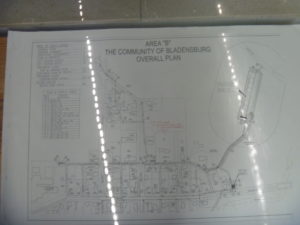 Jeff also said he was very skeptical of this system since he had not worked with one before becoming the engineer for Knox County Water and Sewer. The sand bioreactor had already been up and running for about 4 years when he joined, but he said it has proven itself reliable and effective and that he “would definitely recommend it”, despite having had one lingering question. He wasn’t sure if he needs to plan to replace the media and wasn’t sure if the increase in total dissolved solids was cause for concern, which normalized at a higher level than when the plant originally began operations. Professor Mancl explained that the TDS is indicative of salts and hypothesized that more water softeners may have been installed in the community and could explain the new higher TDS, especially in the context of such a small customer based (around 90 connections). Regardless, she pointed out that TDS has not caused any difficulty in meeting permit/plant performance requirements. Professor Mancl may not have commented specifically on the media replacement question, but from previous conversations with her it is understood that the media shouldn’t need to be replaced as long as it is the proper non-limestone sand and is dosed properly.
Jeff also said he was very skeptical of this system since he had not worked with one before becoming the engineer for Knox County Water and Sewer. The sand bioreactor had already been up and running for about 4 years when he joined, but he said it has proven itself reliable and effective and that he “would definitely recommend it”, despite having had one lingering question. He wasn’t sure if he needs to plan to replace the media and wasn’t sure if the increase in total dissolved solids was cause for concern, which normalized at a higher level than when the plant originally began operations. Professor Mancl explained that the TDS is indicative of salts and hypothesized that more water softeners may have been installed in the community and could explain the new higher TDS, especially in the context of such a small customer based (around 90 connections). Regardless, she pointed out that TDS has not caused any difficulty in meeting permit/plant performance requirements. Professor Mancl may not have commented specifically on the media replacement question, but from previous conversations with her it is understood that the media shouldn’t need to be replaced as long as it is the proper non-limestone sand and is dosed properly.
Solar potential
The sand bioreactor is roughly 40 x 400 ft or around 1/3 of an acre. The spacing of rows of solar panels was explained as well as how around $10,000/ year pf potential energy offset could be generated by installing a little over 300 panels on that space, assuming $0.10 kWh. The county administrator was also present, and we discussed the County’s interest in solar and its potential on this site. Jeff had expressed an interest in it if the payback period can be achieved in 10 years or less. This may be something worth looking into further.
It’s our hope that by sharing stories of lessons learned both good and bad, we can help small rural communities choose the best infrastructure solutions that meet their needs. On October 27, Ben Howard from GLCAP is delivering a webinar to the rest of the RCAP network that will share cover what has been learned and discussed by the Alternative Wastewater Solutions Committee regarding sand bioreactors. If you would like to join, please register here.
